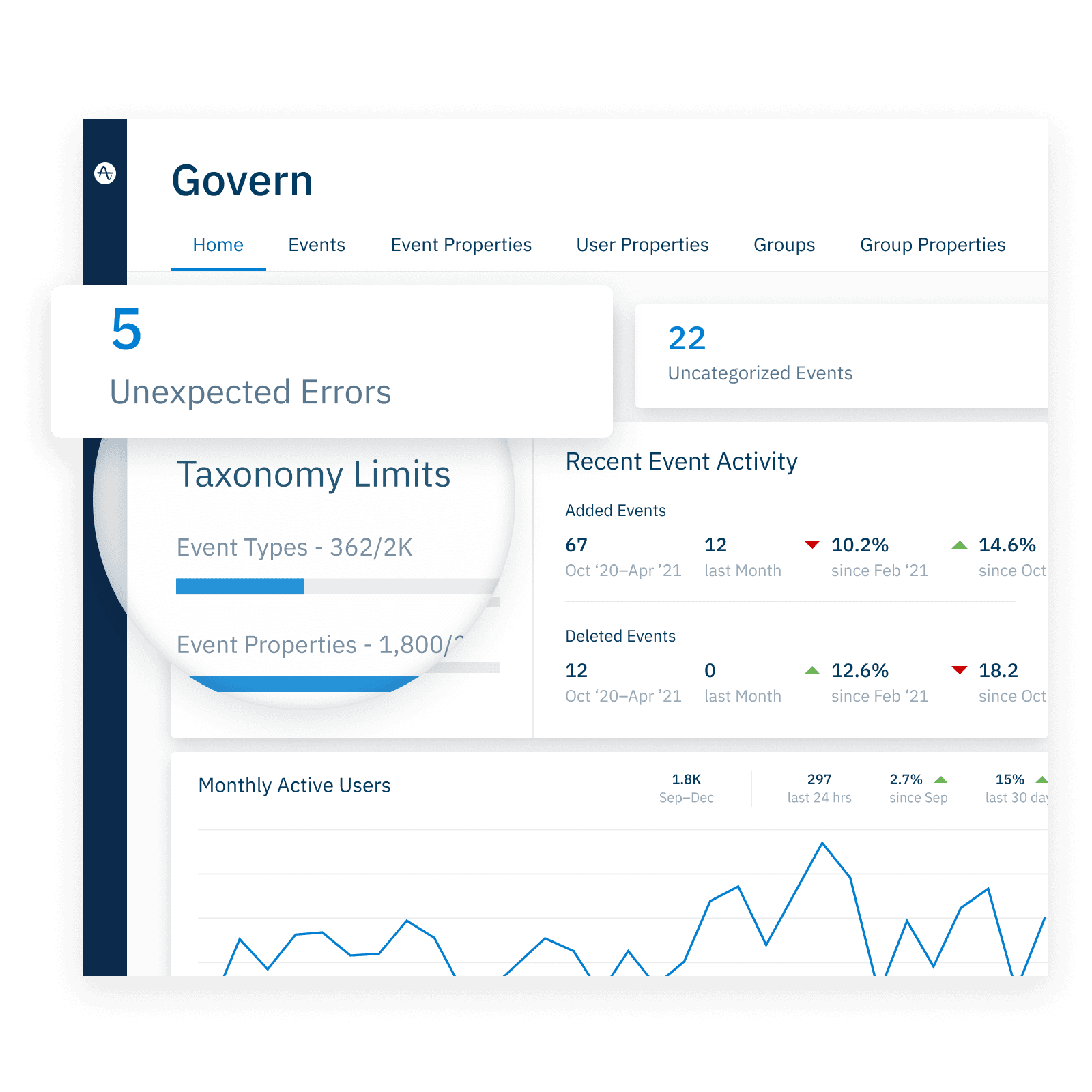Is Your Data Actually Reliable? 8 Ways to Determine Data Quality
Ensure the data you’re collecting and analyzing is accurate, complete, and consistent so you can make informed business decisions.
Data quality measures how well a dataset serves the strategic decision-making process of a business based on data accuracy, completeness, and consistency.
As Harvard business professor Melissa Perri observed at Amplify, obtaining data through user research is recognized as an essential tool for businesses. Product teams win when they take in massive amounts of data and figure out how to differentiate themselves. Perri said, “What we should be looking at is tons of customer and user research, technology implications, user data, market research and data, financial data and implications on sales.”
Real-time data and data expertise are required to set the right product strategy, put it in motion, and manage fast growth. Perri continued, “A lot of organizations and a lot of people will just jump into assumptions and whatever they think should be the next thing, instead of taking the time to actually crunch all of these numbers and figure out what’s next.”
Clearly, data is inseparable from a well-designed product and a profitable business, so you need to ensure that your data quality is up to the task.
Key takeaways
- Data quality should reflect accuracy, completeness, and consistency—and fit within your data governance framework.
- Using the right data tools will provide granular insights into user behavior.
- Employing a cross-functional approach and using data as close to real-time as possible go a long way to ensure your decision-making is based on reliable information.
- Identify which product metrics are most helpful in analyzing data in order to connect product strategy to business revenue.
- Data needs to be useful, so its ability to be easily understood by a variety of teams within your organization is paramount.
What is data quality?
Data quality measures how your data performs based on various factors, such as accuracy, completeness, and consistency. However, your measure of data quality should be specific to your product and business goals.
To start, ask yourself these questions:
- Does your data fit into a well-defined and maintained system?
- Does it allow you to pursue key objectives in a reliable and predictive way?
- Do teams in your organization know how to use data to test hypotheses about your product and users?
- Are these teams confident that the data will accurately validate or invalidate their hypotheses, or do they doubt its relevance?
Your data quality should fit within your data governance framework and propel you forward, not detract from other activities or business functions.
- “Garbage in, garbage out” still applies to the world of data.
- Sophisticated data usage can translate to faster time-to-market and revenue growth.
- Less intentional data management can be misleading.
- For example, duplicated data might artificially inflate metrics and inspire suboptimal management of resources.
- Inconsistencies in naming events and properties (your data taxonomy) could make it difficult to identify common user flows, thus impairing your product team’s ability to learn from users. Learn how to
- Effective data governance lays the groundwork for clean data and robust analytics that propel product-led growth (PLG).
It’s not unusual to have differing interpretations of data. But if teams are constantly second-guessing the trustworthiness of analytics, it probably means you have low-quality data, inconsistent taxonomy, or the wrong data tools to manage it.
Learn more about designing your data taxonomy in our Fundamentals of Data Taxonomy Design course. Then, get started with instrumenting your data using our Guide to Behavioral Data & Event Tracking.
8 ways to assess the quality of a given dataset
Figuring out your organization’s idea of data quality and the right tools is important, but you may already be stuck in suboptimal workflows with unreliable data. As you rethink your organizational approach and try to assess the quality of a given dataset, use the following eight methods to determine your data quality:
- Figure out how data quality relates to your organization’s goals by looking for accuracy, completeness, and consistency, as well as security and compliance with data governance.
- Strive for a single source of truth to effectively prioritize resources and avoid the costs of retroactive data cleanups.
- Use a reputable analytics platform with a well-established underlying schema and turnkey integrations. This will ensure you can harness the full power of different channels with a real-time, holistic, and transparent perspective.
- Employ cross-functional approaches like Patreon to ensure data is relevant and persuasive to all stakeholders. Different roles or teams will assess data quality as it relates to their own functions.
- You can gauge the relevance of your data by examining how frequently your teams are referencing it. If it’s useful, they’ll use it.
- You can also assess data quality through the cost-efficiency and uptime of your data systems. The clarity and consistency of your data schema play a role, too.
- Data convertibility and visualization are also important practical considerations to ensure your teams can clearly understand the information.
- In a quickly changing business environment, make sure your systems can process data as close to real-time as possible. This will allow for product agility and, ultimately, business survival.
By ensuring your metrics are accurate and appropriately contextualized, you create the conditions for consistently reliable information.
Common data quality metrics
As you move toward integrating real-time data into a well-equipped analytics platform and connecting product strategies to business revenue, you’ll need data quality metrics to rely on:
- The frequency with which a team engages with product metrics and data could reflect its quality—if the data is useful, they’ll keep coming back.
- System uptime/downtime also reflects whether you can practically leverage the data.
- The cost of maintaining that system and its ROI are also relevant metrics.
- You can assess data quality in team-specific ways.
- For example, marketing and sales may look at email bounce rates because they can’t do their jobs if they can’t get through to people.
- Data errors or omissions (empty values) also reflect data quality.
- The convertibility of data—how easy it is to move data into different formats or uses—is a relevant metric, as is the ability to visualize it quickly.
- Well-established data schema is a quality metric because confusion and problems with data quality can result from an underlying schema changing too frequently.
Data quality best practices
With those metrics to guide us, what are some best practices?
In theory, teams need to get on the same page and collaborate effectively. In practice, they should establish and understand their event-based schema and put in place the resources required for real-time, clear data querying. Remember: data needs to be useful.
- Product managers, engineers from different development teams, designers, and other relevant stakeholders should all be looped in on a data management and governance strategy early on.
- Data management strategies should define the events relevant to product management KPIs and account for tracking these events. Metrics may change or expand over time, but they should always show organizational relevance.
- Amplitude’s event-based schema treats data as “events,” or any user action or interaction that occurs. Meanwhile, “properties” are details about those users and events.
- You shouldn’t auto-track events. The vast amount of time required to clean up a massive amount of untrustworthy data makes auto-tracking inefficient and unreliable.
- Cloud storage enables real-time data querying, and data warehouses are also commonly used. Both can and should be synced.
Best data quality tools
You need the right data tools to validate assumptions and develop a product strategy. Real-time data management software ensures complete, accurate, secure, high-quality, and trustworthy data.
Amplitude
To make it easy for you to stream data into Amplitude, our pipelines for data ingestion can connect mobile, web, backend, and campaign data—the first step toward getting a holistic view of the customer experience. Turnkey integrations into major cloud apps and data warehouses (including Snowflake), along with APIs + SDKs, accelerate the setup process. Finally, our data governance allows you to set conditions so you’re only accumulating trustworthy data from the beginning of the process.

You’ll want to examine specific user behaviors to see how they illuminate customer needs. Remember, data quality means product quality. Amplitude’s identity resolution unifies data collected across multiple touchpoints—whether that means media views, sign-ups, purchases, or read receipts—unlike analytics tools with a more limited focus.
Furthermore, an intuitive interface and easy-to-understand visualizations can make the data accessible even to non-technical teams.
Other data quality tools
Other data tools include:
- AccelData
- Ataccama One
- Bigeye
- Informatica
- Monte Carlo
- SAP Data Services
Learn more about these and other data quality tools on a software review site such as Gartner.
Before you build, trust your foundation
Data quality helps your organization do what it’s meant to do, often empowering significant competitive advantages. High data quality is maintained and realized through an accessible analytics platform.
Trustworthy data removes the guesswork from the important strategic decisions you have to make. An easy-to-use self-service platform with the right tools can empower your product and data teams in their collection of robust, reliable analytics.
Uplevel your data strategy and lead your team to trustworthy analytics with Amplitude’s Behavioral Data and Event Tracking Guide.

Brandon Khoo
Former Senior Product Manager, Amplitude
Brandon Khoo is a former Senior Product Manager at Amplitude, leading the strategy and development of the Amplitude's insights-driven customer data platform. His role also involves defining the integration infrastructure for Amplitude’s partner ecosystem. Brandon is an alumnus of Uber and KPMG, and he holds degrees in Electrical Engineering and Finance from the Queensland University of Technology.
More from Brandon





